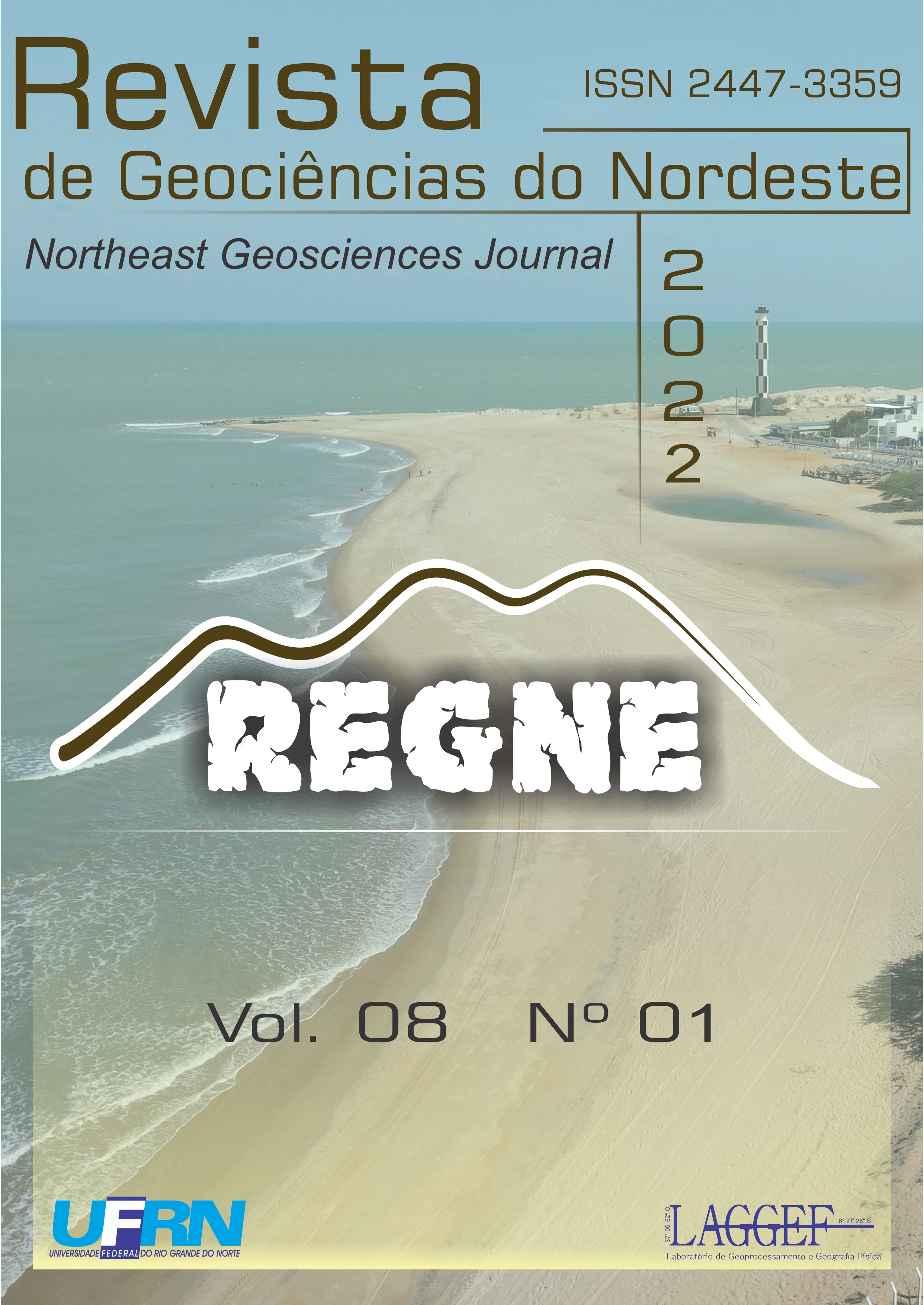Fragilidade Ambiental aplicada em área de manancial no Nordeste brasileiro
DOI:
https://doi.org/10.21680/2447-3359.2022v8n1ID24368Abstract
Northeast Brazil is greatly affected by water scarcity, mainly due to unfavorable climatic characteristics. Due to the recent crisis, between 2010 and 2017, dozens of cities in the semi-arid region faced serious problems that exposed the fragility of current supply systems. Environmental studies on supply sources are necessary for territorial planning and the identification of vulnerabilities to degradation processes, aiming to adapt human needs to environmental viability. The objective of this work is to map the Environmental Fragility to the erosion of the Bonfim Lacustrine System, a set of lagoons responsible for the supply of water to the Agreste region of Rio Grande do Norte (RN). Environmental Fragility in Geographic Information Systems (GIS) was used with the use of Multicriteria Analysis and Fuzzy Logic, to integrate the geoenvironmental attributes in order to verify the relationships between erosive processes of morphogenesis and pedogenesis associated with the silting up of the lake region of the source. 44.15 km² (61.15% of the area) had a Medium, Strong and Very Strong degree of Environmental Fragility, indicating the need for attention in relation mainly to land use regulations, given the existence of activities with high degradation power in in line with areas with considerable degrees of fragility.


 Português (Brasil)
Português (Brasil) English
English







